Top 15 Places to Visit in Tokyo for 2025!

Why Visit Tokyo?
Tokyo’s unique blend of tradition and modernity, vibrant neighborhoods, and endless attractions make it a top destination for travelers. From historic temples and gardens to cutting-edge technology and entertainment, Tokyo offers something for everyone.
Whether you’re wondering why visit Japan or specifically considering is Tokyo worth visiting, the answer is a resounding yes.
Is Tokyo Safe?
Tokyo is one of the safest cities in the world. Visitors can feel secure exploring its bustling streets, even at night. However, like any major city, it’s essential to stay aware of your surroundings and follow local guidelines to ensure a safe and enjoyable trip.
4 Tokyo Tours You Will Love
Top 15 Places to Visit in Tokyo
Tokyo, Japan’s bustling capital, is a city that seamlessly blends the traditional with the ultra-modern. With its rich history, vibrant culture, and endless attractions, there are countless things to do in Japan – Tokyo specifically.
Whether you’re a first-time visitor or a seasoned traveler, this Tokyo Japan guide will highlight the top 15 places to visit in Tokyo, ensuring your trip is filled with unforgettable experiences.

Shibuya Crossing
Often compared to Times Square in New York, Shibuya Crossing is one of the busiest pedestrian intersections in the world. This iconic location is a must-see for anyone seeking to experience the fast-paced Tokyo lifestyle.
The area’s neon lights, giant video screens, and bustling atmosphere make it one of the best things to do in Tokyo.

Sensō-ji Temple
Located in Asakusa, Sensō-ji is Tokyo’s oldest and one of its most significant temples. The temple’s vibrant market street, Nakamise-dori, offers a variety of traditional snacks and souvenirs, providing a glimpse into Japan’s rich cultural heritage.
Visiting Sensō-ji is high on the list of the top 15 places to visit in Tokyo.

Tokyo Skytree
Standing at 634 meters, Tokyo Skytree is the tallest structure in Japan and offers panoramic views of the city. The observation decks provide breathtaking vistas, especially at sunset or night. It’s a perfect spot for those looking for Tokyo adventures.

The Imperial Palace
Home to the Emperor of Japan, the Imperial Palace is surrounded by beautiful gardens and historic buildings. While tours inside the palace are rare, walking around the palace grounds and the East Gardens offers a peaceful retreat from the city’s hustle and bustle.

Shinjuku Gyoen National Garden
This sprawling park in Shinjuku is one of Tokyo’s most beautiful green spaces, featuring traditional Japanese landscapes, French formal gardens, and English gardens. It’s an ideal spot for a relaxing day out and one of the top 15 places to visit in Tokyo.

Meiji Shrine
In a forested area near Harajuku, Meiji Shrine is dedicated to Emperor Meiji and Empress Shoken. The serene surroundings and impressive torii gates make it a popular destination for visitors seeking tranquility and cultural insight.

Odaiba
This futuristic island in Tokyo Bay is home to shopping malls, entertainment complexes, and attractions like the life-size Unicorn Gundam statue and teamLab Borderless digital art museum. Odaiba is perfect for family-friendly Tokyo adventures.

Tsukiji Outer Market
Although the inner wholesale market has moved to Toyosu, the Tsukiji Outer Market remains a vibrant area full of fresh seafood stalls and traditional eateries. It’s a must-visit for food lovers and those exploring the best things to do in Tokyo.

Akihabara
Known as the mecca for anime, manga, and electronics, Akihabara is a paradise for tech enthusiasts and pop culture fans. The area is bustling with shops, themed cafes, and arcades, offering a unique glimpse into contemporary Japanese culture.

Ginza
Tokyo’s premier shopping district, Ginza, is famous for its high-end boutiques, department stores, and fine dining. Walking through Ginza is like experiencing the epitome of Tokyo’s modern luxury lifestyle.

Ueno Park and Zoo
Ueno Park is a vast public space that houses several museums, a zoo, and beautiful cherry blossoms in spring. It’s a great destination for families and anyone looking to enjoy outdoor activities in Tokyo.

Harajuku
Harajuku is the center of Tokyo’s youth culture and fashion. Takeshita Street is lined with trendy shops, quirky cafes, and vibrant street art, making it a must-visit for those interested in the unique Tokyo lifestyle.

Roppongi Hills
This upscale area is known for its nightlife, luxury apartments, and the Mori Art Museum. Roppongi Hills offers a mix of art, culture, and entertainment, making it one of the top 15 places to visit in Tokyo.

Tokyo Disneyland and DisneySea
Located just outside the city, Tokyo Disneyland and DisneySea offer magical experiences for all ages. These theme parks are consistently ranked among the best in the world and provide endless fun and adventure.

Nakameguro
Known for its picturesque cherry blossom-lined river, Nakameguro is a trendy neighborhood with chic cafes, boutiques, and restaurants. It’s an excellent place for a stroll and one of the top 15 places to visit in Tokyo for a more relaxed atmosphere.
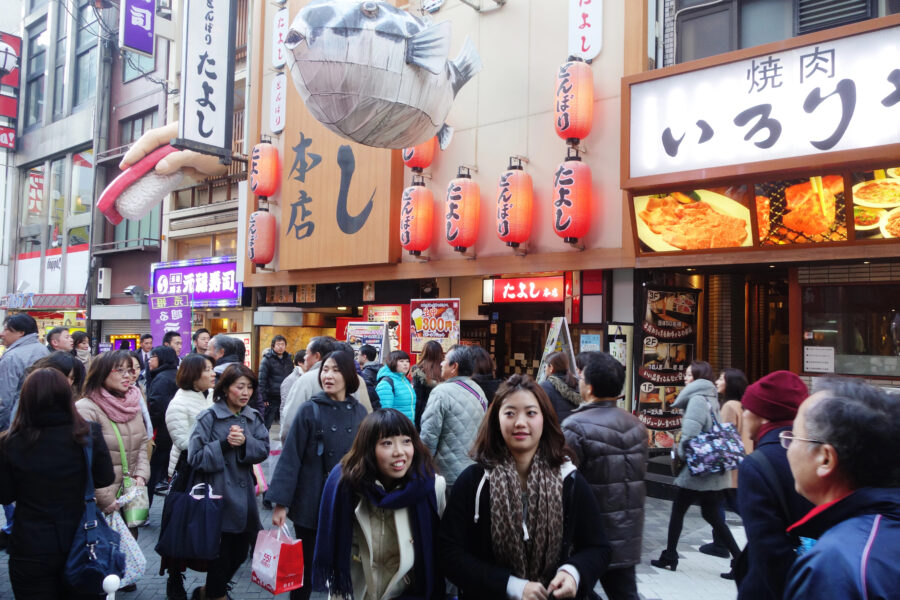
Tokyo 3 Day Itinerary
Planning a trip to Tokyo can be overwhelming due to the many attractions and activities available.
Here’s a comprehensive Tokyo 3 day itinerary to help you make the most of your visit to Japan’s bustling capital. This Tokyo Japan guide will ensure you hit the top 15 places to visit in Tokyo, along with some unique experiences.
Day 1: Exploring Central Tokyo
Morning:
- Asakusa and Sensō-ji Temple: Start your day in Asakusa, visiting the historic Sensō-ji Temple. Stroll through Nakamise-dori, a lively shopping street filled with traditional snacks and souvenirs.
- Tokyo Skytree: Head to the nearby Tokyo Skytree for panoramic city views. The observation decks provide stunning vistas, especially on clear days.
Afternoon:
- Akihabara: Explore Akihabara, Tokyo’s tech and anime district. This area is a paradise for gadget enthusiasts and anime fans, offering countless shops and themed cafes.
- Imperial Palace East Gardens: Walk through the serene Imperial Palace East Gardens, a peaceful escape in the city’s heart.
Evening:
- Ginza: End your day in Ginza, Tokyo’s luxury shopping district. Enjoy high-end shopping and dine at one of the many fine restaurants.
Day 2: Modern Tokyo and Beyond
Morning:
- Meiji Shrine and Yoyogi Park: Visit the tranquil Meiji Shrine, surrounded by a lush forest, and take a leisurely walk through Yoyogi Park, adjacent to the shrine.
- Harajuku and Takeshita Street: Explore Harajuku, the youth culture and fashion hub. Takeshita Street is lined with trendy boutiques and quirky cafes.
Afternoon:
- Shibuya Crossing: Experience the iconic Shibuya Crossing, one of the busiest pedestrian intersections in the world. Don’t forget to visit the statue of Hachiko, the loyal dog.
- Shinjuku Gyoen National Garden: Relax in Shinjuku Gyoen National Garden, a beautiful park that offers a mix of traditional Japanese, French, and English landscape gardens.
Evening:
- Omoide Yokocho and Golden Gai: Head to Shinjuku for dinner. Explore Omoide Yokocho, known for its small eateries and izakayas. Then, visit Golden Gai, a collection of tiny bars and pubs offering a unique nightlife experience.
Day 3: Unique Experiences and Day Trips
Morning:
- Tsukiji Outer Market: Start your day with fresh seafood at Tsukiji Outer Market. While the inner market has moved, the outer market still offers a variety of food stalls and restaurants.
- Odaiba: Visit Odaiba, a futuristic island with attractions like the life-sized Unicorn Gundam statue and teamLab Borderless digital art museum.
Afternoon:
- Sumo Wrestling in Ryogoku: If lucky, catch a sumo wrestling match at the Ryogoku Kokugikan. Visit the nearby Edo-Tokyo Museum to learn about Tokyo’s history.
- Yanaka: Explore the old neighborhood of Yanaka, which survived the Great Kanto Earthquake and World War II bombings. It’s known for its nostalgic atmosphere and traditional shops.
Evening:
- Tokyo Tower: Conclude your Tokyo adventures with a visit to Tokyo Tower. The night views of the city are spectacular, providing a fitting end to your Tokyo itinerary.

Things to Do in Tokyo at Night
Tokyo transforms into a dazzling metropolis at night, offering various activities and experiences. Here are some of the best things to do in Tokyo at night:
- Robot Restaurant: Experience a surreal and futuristic show at the Robot Restaurant in Shinjuku. It’s one of the weirdest things to do in Tokyo that you won’t forget.
- Shinjuku Kabukicho: Explore the lively Kabukicho district in Shinjuku, which is known for its nightlife and entertainment options. Visit bars, clubs, and karaoke spots.
- Roppongi Hills: Enjoy the nightlife in Roppongi Hills, with its upscale bars, clubs, and the Mori Art Museum for a night-time art experience.
- Tokyo Skytree and Tokyo Tower: Both towers offer stunning night views of the city. The illuminated skyline is a sight to behold.
- Yakatabune Dinner Cruise: Take a dinner cruise on a traditional yakatabune boat, offering views of Tokyo’s skyline from the water while enjoying a delicious meal.
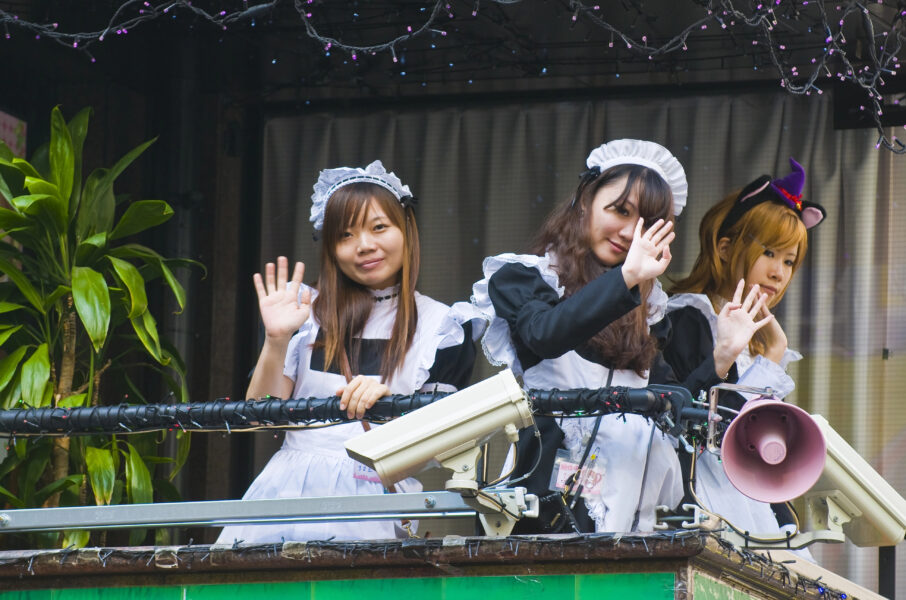
Weird Things to Do in Tokyo
Tokyo is famous for its quirky and unique attractions. Here are some of the weird things to do in Tokyo that will make your trip unforgettable:
- Maid Cafes: Visit a maid cafe in Akihabara, where waitresses dressed in maid costumes serve food and drinks playfully and entertainingly.
- Owl Cafes and Animal Cafes: Tokyo has various animal cafes where you can interact with owls, hedgehogs, and other animals while drinking.
- Kawaii Monster Cafe: Step into a psychedelic world at the Kawaii Monster Cafe in Harajuku, known for its outlandish decor and colorful food.
- Themed Restaurants: Dine in themed restaurants such as the Ninja Akasaka, where ninjas serve your food, or the Alcatraz ER, a prison-themed restaurant.
- Vending Machines: Tokyo is home to vending machines selling unusual items, from hot meals to fresh eggs, scattered throughout the city.
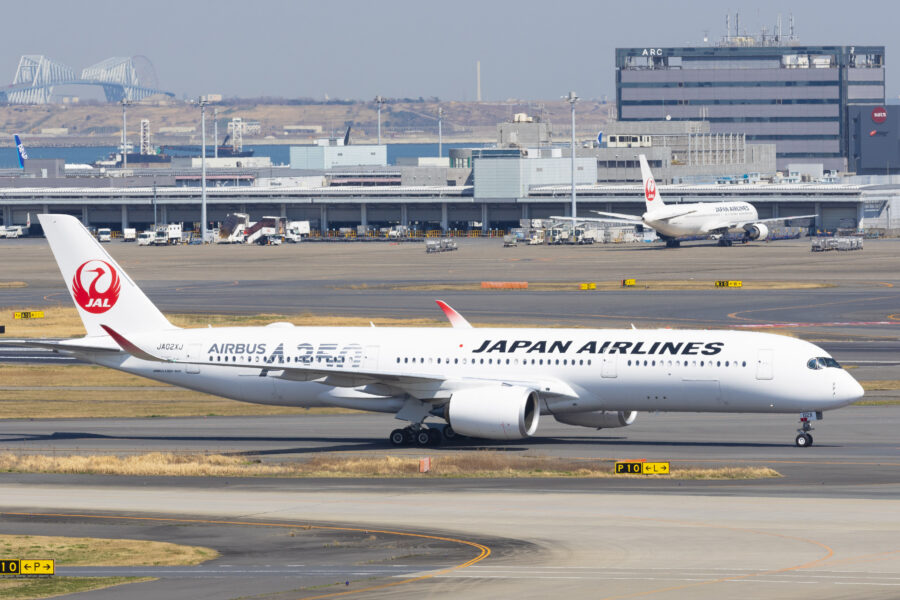
Traveling to Tokyo
Traveling to Tokyo is a breeze with its excellent transportation options and accessibility. Here’s a quick Tokyo Japan guide for getting to and around the city:
- Airports: Tokyo has two main airports, Haneda and Narita. Haneda is closer to the city center, while Narita handles most international flights.
- Train: Tokyo’s extensive train and subway system makes it easy to navigate the city. The JR Yamanote Line is particularly useful for tourists, connecting major areas like Shibuya, Shinjuku, and Ueno.
- Suica and Pasmo Cards: Get a Suica or Pasmo card for convenient travel on trains, subways, buses, and even some taxis.
- Taxis and Buses: Taxis are available but can be expensive. Buses fill in the gaps where trains don’t go, and using a tourist map of Tokyo can help you navigate the routes.
- Day Trips: Visit nearby attractions like Nikko, Hakone, and Yokohama. A tourist map of Kyoto is useful if you plan to visit the historic city, which is just a Shinkansen ride away.
Tokyo Adventures
Tokyo offers a mix of traditional charm and futuristic innovation, making it one of the top destinations in the world.
This Tokyo Japan guide has covered the top 15 places to visit in Tokyo, things to do in Tokyo at night, weird things to do in Tokyo, and essential travel tips.
Whether exploring the bustling streets, enjoying the vibrant nightlife, or discovering unique attractions, Tokyo promises endless adventures and unforgettable experiences.
So, why visit Tokyo? The better question is, why not?
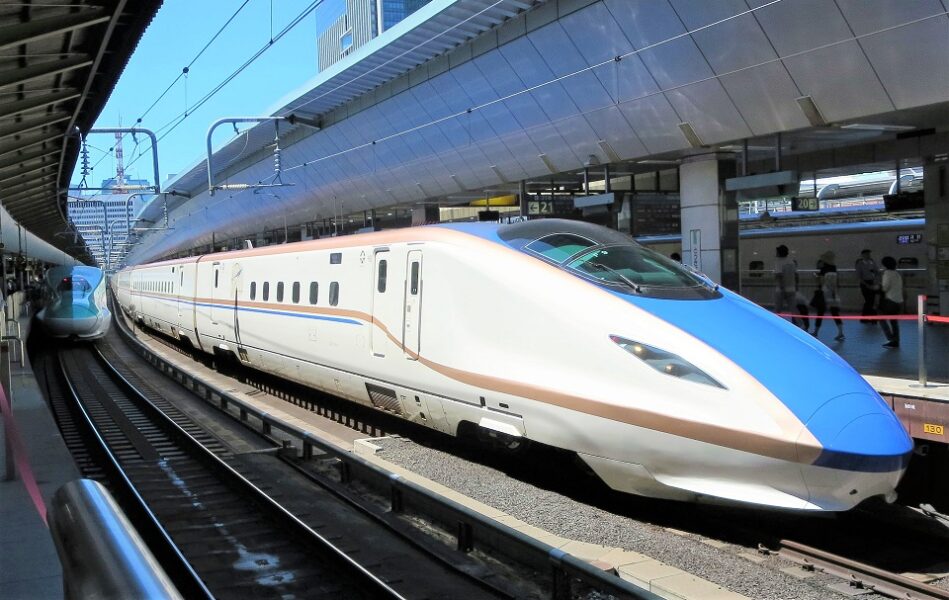
Guide for Traveling to Tokyo
Tokyo, Japan’s vibrant capital, is a city that seamlessly blends the traditional and the ultra-modern.
With its rich history, diverse neighborhoods, and endless attractions, Tokyo offers something for every traveler.
From the bustling streets of Shibuya and the historic temples of Asakusa to the cutting-edge skyscrapers of Shinjuku and the tranquil gardens of the Imperial Palace, Tokyo is a city of contrasts and surprises.
Tokyo is a megalopolis. If you include the entire Tokyo region there are over 38 million people, and it is continuing to grow. In the summer of 2020 Tokyo will host the summer the Olympics. The last time it hosted the Olympics was in 1962, which coincided with the opening of the Shinkansen bullet train to Osaka.
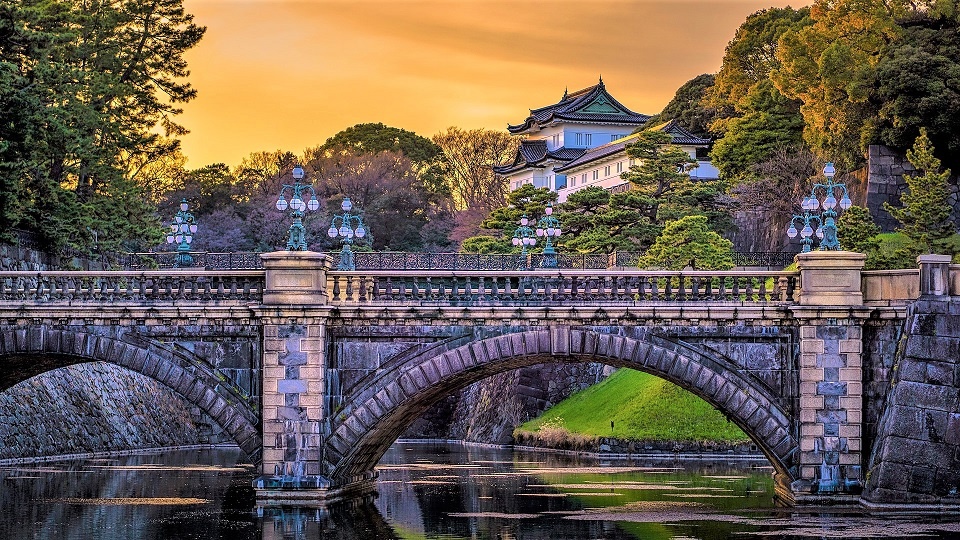
History of Tokyo
Tokyo, originally called Edo, was established in early 1603 by the Shogun Tokugawa. Under Shogun rule, Edo grew and flourished.
In 1868, imperial rule was restored, and the Emporer moved from the traditional capital of Kyoto to Edo. With the move, Edo became Tokyo, which means East Capitol. This started the Meiji era, which lasted until 1912.
Tokyo worked quickly to modernize and become more Western. This continued under the Taisho Era (1912-1926).
The Great Kanto Earthquake in 1923 caused major damage to Tokyo. Most of the center of the city was destroyed by fire, and over 140,000 people were killed or missing. The Showa period (1926-1989) began with rebuilding Tokyo. This was when Japan accelerated its modernization.
Tokyo experienced heavy damage during WWII. Ultimately, Tokyo and Japan started becoming an economic powerhouse after the war.
The Heisei period (1989-2019) suffered from the economic bubble burst in the early 1990s, but Tokyo has long since rebounded as Japan’s economic center. 2019 is the start of the Reiwa Period, with Tokyo not seeing any slowdown.
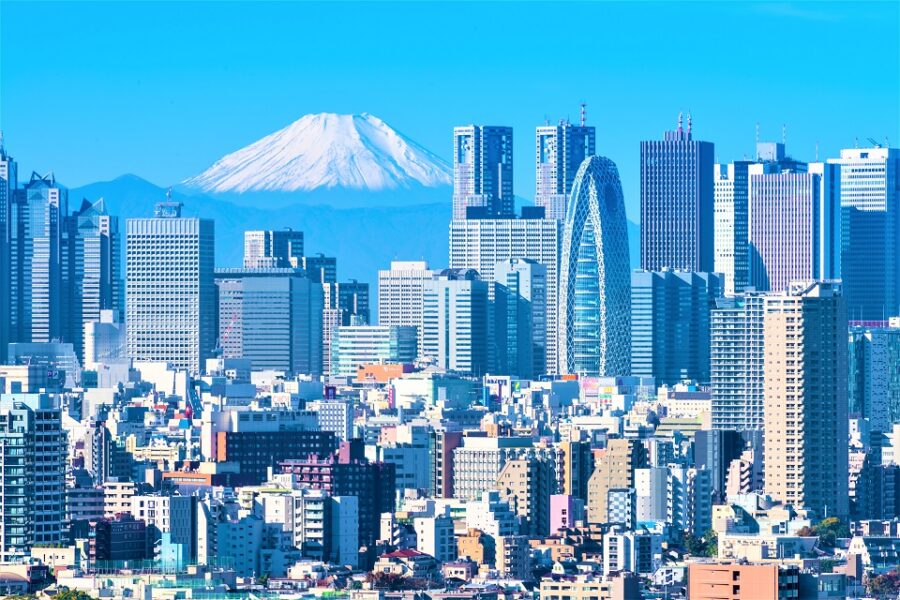
Tokyo Fact File
- Location: Tokyo is situated on one side of Tokyo Bay on the island of Honshu. It is made of 23 wards.
- State/Province: Kanto Region, Tokyo-to Capital District
- Population: 13.93 million
- Area: 406.6 km2 (157 sq mi)
- Seasonal Weather: Tokyo has a humid subtropical climate. During the summer (June-September), it can be quite hot and muggy. Winter, however, is rather mild.
- Official Language: Japanese
- Religion: Shinto, Buddhism
- Time Zone: UTC +9
- Currency: Japanese Yen
- Main Electricity: 100 V–50 Hz (or 60Hz)
- Driving Side: Left
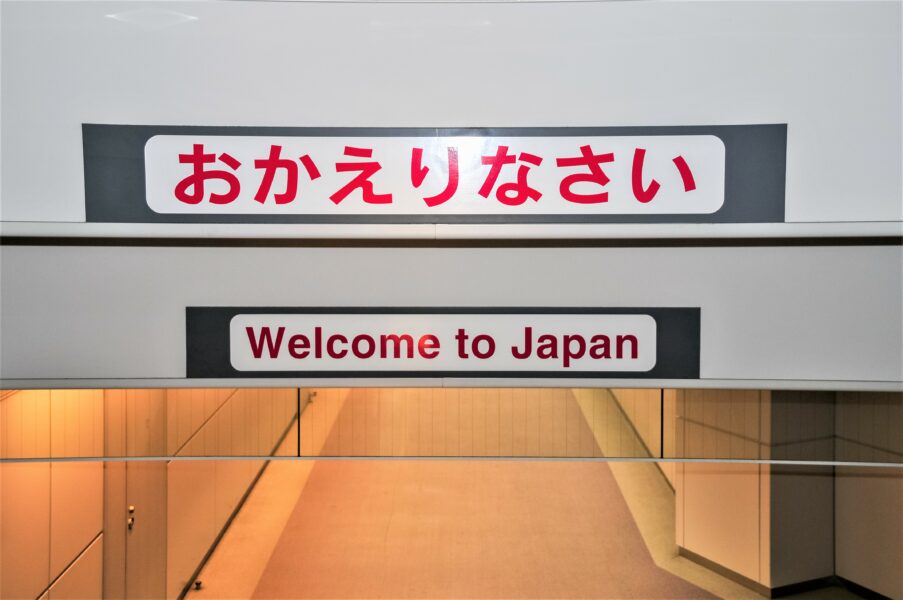
Airports & Entry
Tokyo is served by two international airports, Haneda and Narita.
Haneda to Central Tokyo
Haneda is the original and the closest airport to downtown Tokyo. This Airport is modernized and expanded thanks to a major expansion program over the past 10 years.
Train
There are train options to Tokyo. The first is the Tokyo Monorail (Accepts JR Pass) to Hamamatcho. The second is the Keikyu line to Shinagawa, with many services continuing onto the Asakusa subway.
For more information on the Japanese Rail Pass (JR Pass), see information and purchase options at KLOOK.
Bus & Taxi
With Haneda being closer to the city, taxis are an option, although still expensive. The Limousine Bus has departed to various Tokyo destinations, including many popular hotels.
Narita Airport to Central Tokyo
Narita is the “newer” airport and is 37 miles from Tokyo. However, when it opened in 1978, almost all international flights were diverted to Narita. In the last five years, Haneda has only begun receiving long-haul international flights again.
Train
There are several train options to Tokyo. The fastest is the Keisei Skyliner, which takes just over 35 minutes from the airport to Nippori Station on the Yamanote Loop or 40 minutes one stop further at Ueno.
The second fastest is the JR Narita Express (N’Ex), which takes about 1 hour to Tokyo Station. Some N’Ex trains continue to other parts of the Tokyo region.
If you want to save money, the Keisei Line has local trains to Ueno. It also has SkyAccess trains that run from the airport onto the Asakusa subway line in Tokyo and Haneda Airport.
Not to be outdone, Japanese Railways also has a local train service that links Chiba and Tokyo via the Sobu/Yokosuka Line.
Bus & Taxi
With Narita being so far out of Tokyo, taxi fares will be very expensive to get to the city. An alternative is the limousine bus, which departs to various destinations in Tokyo and includes many popular hotels. Due to Tokyo traffic, the bus will take longer than the train to most destinations.
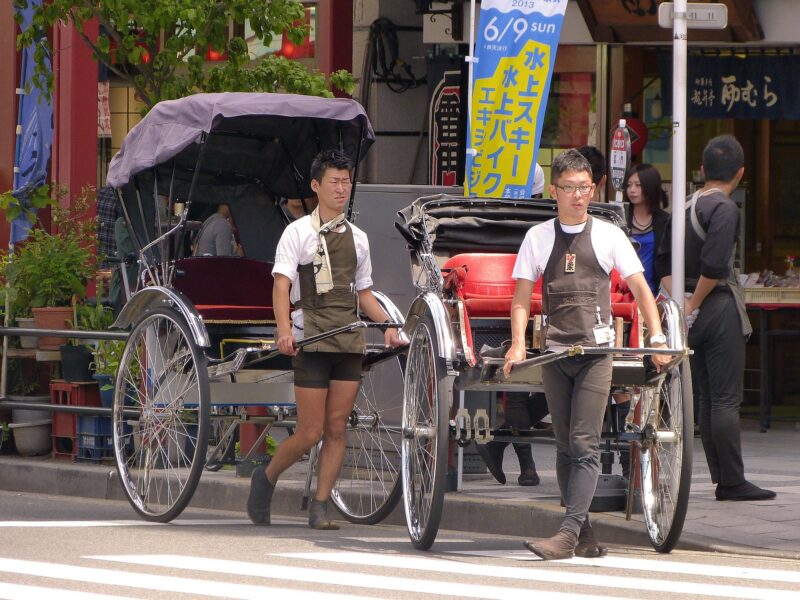
Getting Around Tokyo
Tokyo covers a huge region, plus the nearby cities of Kawasaki and Yokohama. It is a bit bewildering. I would not recommend renting a car. There is a lot of traffic and many small streets to get lost in. Locals and tourists depend on the large rail and subway systems.
The system is a bit bewildering, even for locals. Below is a brief synopsis.
Train
Tokyo has multiple railway systems. Japanese Rail (JR) is the largest and what most tourists will use, including the famous Yamanote Line that rings the city.
Tourists might use other commuter railways, such as the Odakyu to Hakone, Tobu to Nikko, or Keisei to Narita Airport. Tokyo also maintains subway networks.
The Tokyo Subway is the oldest, with 13 lines, and the Toei Subway with four lines. To reduce the stress of using the rail and subway systems, I highly recommend getting a Pasmo or Suica IC card. Once you get the cards, load money onto the card.
Tap the card at the entry gates, and tap out when exiting or using the transfer gate. The appropriate fares will automatically be deducted from the card. Pay attention when you exit, as a display will show the fare paid and the amount remaining on the card.
The difference between a Pasmo and a Suica IC card is who sells them. Pasmo is from Tokyo-area non-JR rail operators, including Tokyo Metro and Toei Subway, while Suica is from JR East. The cards may be used on all the same lines.
When you have finished using the card, you may return it to obtain a refund of the small deposit originally paid when purchased. If you wish to do this, the Pasmo must be returned to a subway or private rail station in Tokyo, and the Suica must be returned to a JR East station.
To find out more on the Suica IC, including purchasing options, see KLOOK.
Tram
Two tram lines remain in Tokyo. The Setagaya line is just west of Shibuya but is not typically used by Tourists.
I highly recommend the Sakura Tram (formerly the Arakawa Tram) line for tourists. It runs in northern Tokyo through neighborhoods with a more typical Tokyo residential feel.
Some great parks along the line are famous for Cherry Blossom trees, so the tram line is called the Sakura Line. Both tram lines accept the Pasmo or Suica card for fare payment.
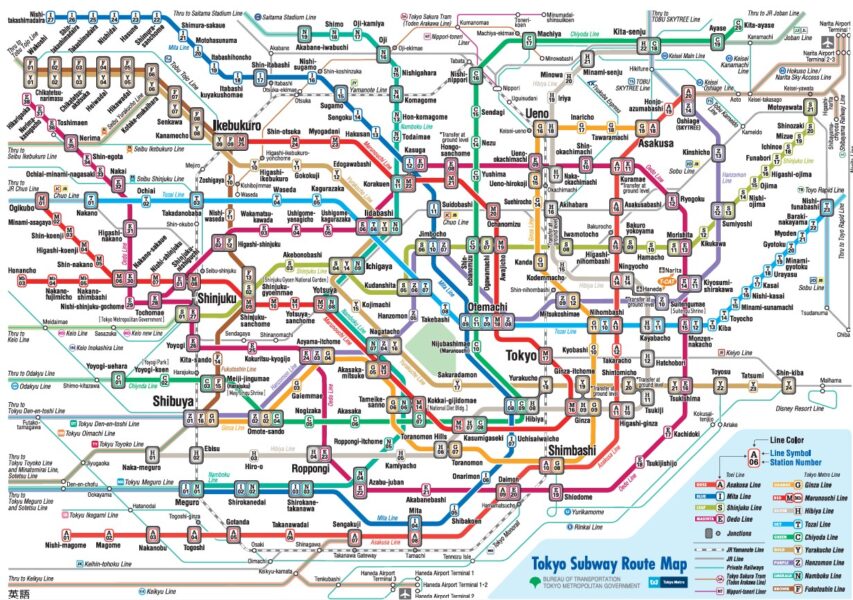
Bus
There are bus lines all over Tokyo. Some lines are useful in filling in the rail gaps, but you must know the routes. TOEI publishes an English bus map of popular bus lines for tourists.
Taxi
Taxis are plentiful in Tokyo but spendy. Be sure to allow the driver to open and close the door to the taxi via a mechanical arm inside the car. Cash, Credit, Pasmo, and Suica cards are accepted.
Jinrikisha (Rickshaw)
Person-powered rickshaws are still seen throughout Tokyo and Japan but are now mainly for tourists. You can find rickshaws around Tokyo in the Asakusa area.
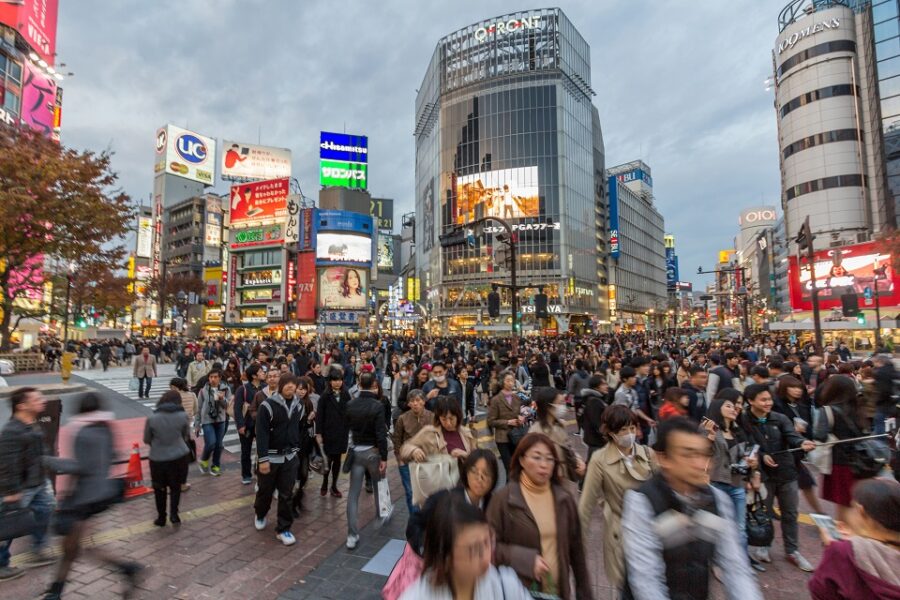
Top 5 Neighborhoods to Visit
Marunouchi: The contrast between the Imperial Palace and the modern office buildings is striking. Tokyo Train Station is located here.
Shibuya: The world-famous Shibuya Crossing. It is like Times Square in New York, but many more people!
Shinjuku is home to some of Tokyo’s tallest buildings, including the Tokyo Government Tower. It is also the world’s busiest train station.
Ginza: This is a world-famous shopping district for high-end items.
Asakusa is a popular tourist area with the Senso-Ji temple and covered shopping streets.
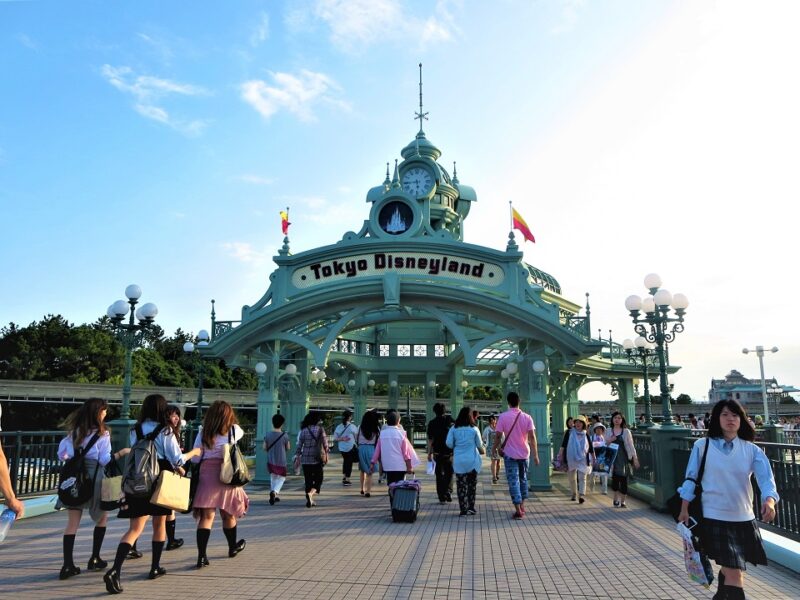
Top 5 Visitor Attractions
Tokyo Tower: This tower is patterned after the Eiffel Tower of Paris.
Tokyo SkyTree: A modern tower, the tallest structure in Japan, with great views and shopping.
Sensō-Ji Temple: In Asakusa, well worth the visit
Imperial Palace Grounds: Tours are rare, but walking outside the palace is beautiful.
Tokyo Disneyland Resort: Located on reclaimed land, it has two Disney Parks, Disneyland and Disney Sea. It is just a short train ride from Tokyo Station.
Top 5 Restaurants
Instead of recommending specific restaurants, I will recommend my top 5 favorite food types in Tokyo. You will find this Japanese cuisine all over the city. Most of the best places are on narrow streets and are often on the second, third, or higher levels of a narrow building.
Sushi is raw fish with rice. It is a Japanese staple. Convenience store sushi in Tokyo is better than most US Sushi restaurants.
Soba Noodles: These noodles are either cold or hot and are made from buckwheat.
Izakaya: These are small plate-style restaurants. They usually have an extensive menu designed for sharing.
Shabu-Shabu: This hot pot dish where you boil vegetables and thinly sliced meats.
Yakiniku: Choice of grilled meat; the restaurants bring out your meat choices, and then you grill it on the grill in the middle of your table.
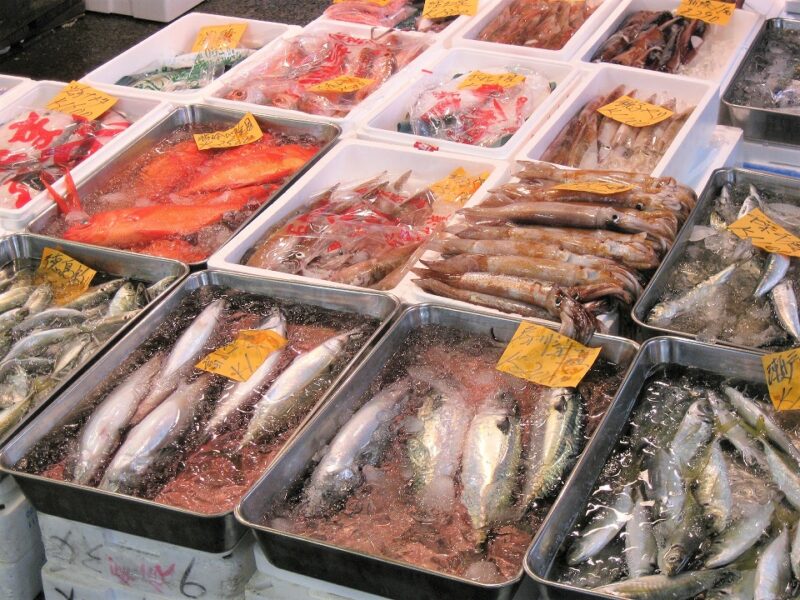
Top 5 Locally Unique Tokyo Activities
Tokyo-Edo Museum: This is a great museum with full-scale and miniature dioramas of Tokyo from the Edo period to recent history.
Tokyo Metropolitan Government Building Observation Deck: Where else can you get a great view of Tokyo? On a clear day, Mt Fuji is FREE!!
Asahi Tower: This unique building, not far from Asakusa, is made to look like a mug of beer. On the top floor is a small, inexpensive restaurant serving Asahi Beer and offering city views.
Sumo Wrestling: The Sumo stadium is next to the Tokyo Edo Museum. Ryogoku is the hub for all Sumo training and matches.
Fish Market: Until 2018, the Tokyo fish market was in Tsukiji, where you could watch tuna auctions early in the morning. There are still fish merchants in Tsukiji so that you can see the crazy auctions at the new fish market in Toyosu.
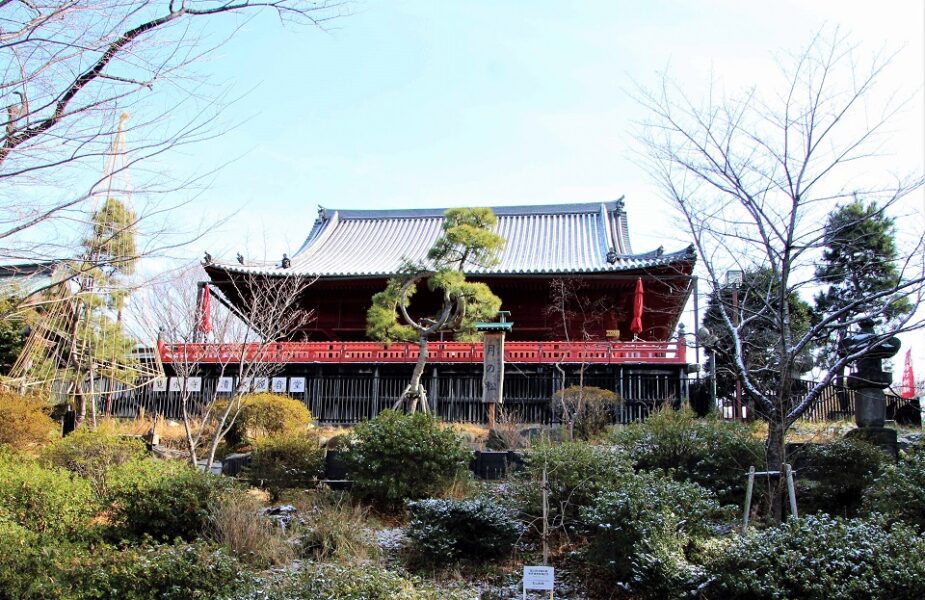
Top 5 Tokyo Outdoor Recreational Activities
Onsen: Many hotels have hot springs. But I recommend visiting small towns outside Tokyo to get a uniquely Japanese experience.
Walk/bike along rivers: Tokyo has many recreational trails along its waterways, usually on the river dikes or along the river floodplain.
Yoyogi Park: Located next to Harajuku, this beautiful park is home to Meiji Junku, or Meiji Shrine. I have seen beautiful Western and Shinto wedding parties here.
Shibuya Crossing: Come here day and night to see the mass of people when the walk signs turn green. Also, visit the dog statue of Hachiko.
Ueno Park and Zoo: This city park is home to a few museums, plus the Ueno Zoo!

Top 5 Day Trips from Tokyo
Nikko: A Unesco Heritage site easily accessed by the Tobu or JR railways in less than 2 hours
Enoshima is home to Japan’s largest Buddha and a tram line along the sea. Easily accessed by JR railway.
Hakone is a diverse region with many Onsens and some old Tokugawa highways. The Odakyu Line, which includes the “Romance Car” trains, will take you there.
Yokohama: Tokyo’s sister city to the south has many museums and a Chinatown.
Kyoto: Although I’d spend the night there, Kyoto is full of rich heritage and is only just over 2 hours by Shinkansen (Bullet train)
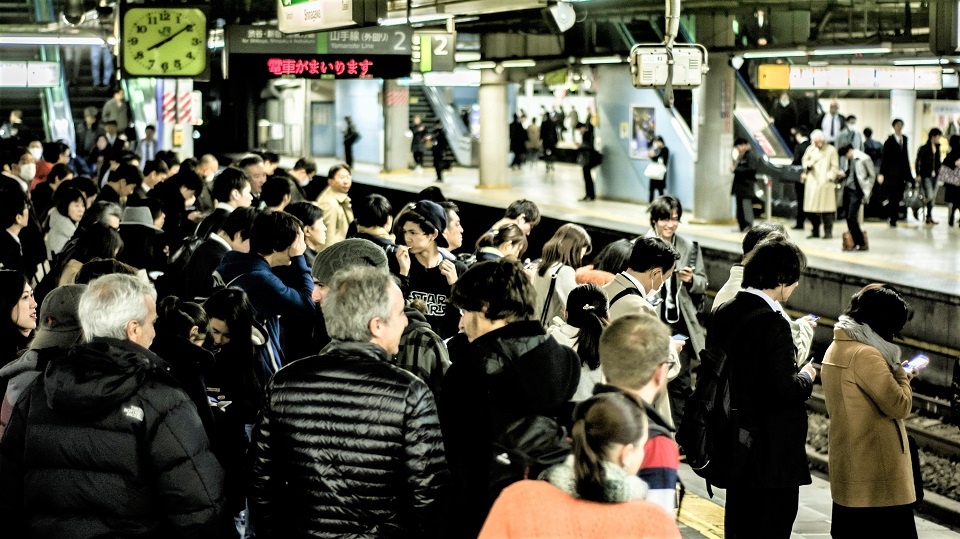
Visiting Tokyo Safely
Tokyo is one of the safest major cities to visit in the world. The only two concerns are that trains are very crowded during Rush Hour and inappropriate touching may occur.
In the late evening, boisterous people may try to get to the last trains of the night. However, they are usually harmless.
What I like about Tokyo
I love the hustle-bustle of the city and its busy rail transport network. Tokyo is a very active city with a lot of lights. It can get a little too crowded, even for me, as a former New Yorker. But as a railfan, it is a paradise!
Tokyo is also a series of neighborhoods. Walking down side streets, you may run into beautiful shrines and temples. The stark contrasts between the modern glass structures and the old wooden shine are awesome.
The Japanese will go out of their way to help you if you ask them. Sometimes, they even go way out to get you where you want to go.
Robert’s passion for nature and history began early when he preferred museums over beaches. An archaeology and anthropology graduate from Cambridge, he volunteered across the UK and explored China. Now, he writes about his adventures while his kids drag him to beaches and theme parks.

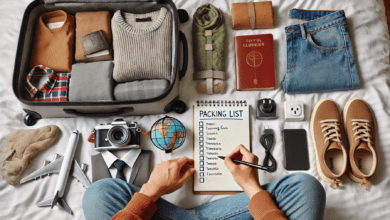

![How to Use Apple AirTags as Luggage Tracking Tags - [year] Update](https://theflightguy.com/wp-content/uploads/2024/06/image-140-390x220.png)
